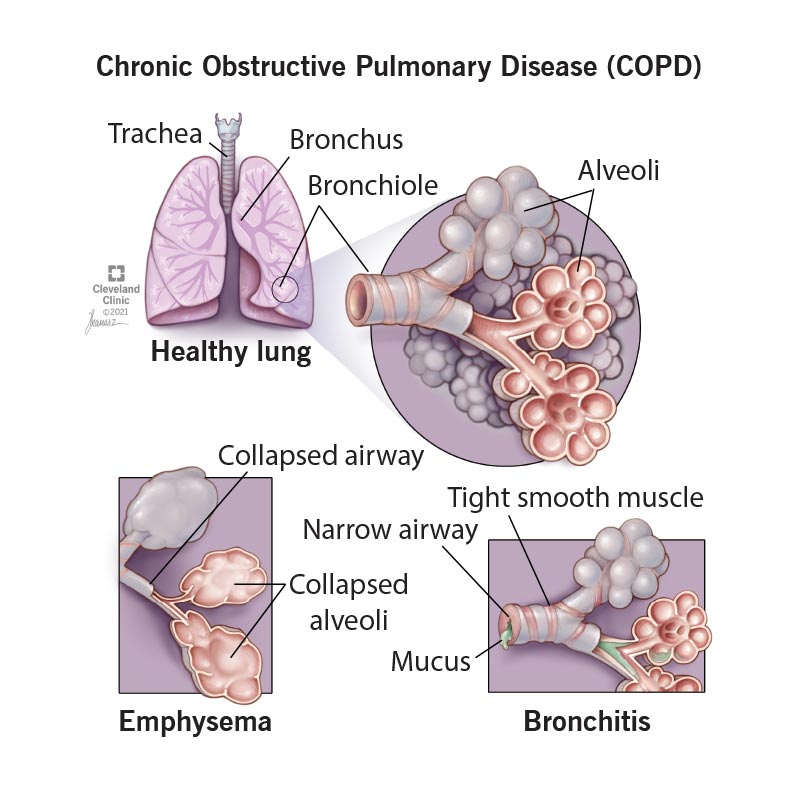The nurse is preparing to perform tracheostomy care on a client diagnosed with COPD. Which action should the nurse complete first?
Elevate the client’s head of the bed to 45 degrees.
Hyper-oxygenate the client using an Ambu bag.
Open the suction and tracheostomy kits.
Suction the client using aseptic technique.
The Correct Answer is B
Choice A reason: Elevating the client’s head of the bed to 45 degrees is important for promoting optimal lung expansion and reducing the risk of aspiration. However, it is not the first priority when preparing for tracheostomy care. Ensuring adequate oxygenation is more critical in the immediate preparation phase.
Choice B reason: Hyper-oxygenating the client using an Ambu bag is the first priority. This step is crucial to ensure that the client has sufficient oxygen reserves before the tracheostomy care procedure begins. Hyper-oxygenation helps prevent hypoxia during suctioning, which can be particularly important for clients with COPD who may already have compromised respiratory function.
Choice C reason: Opening the suction and tracheostomy kits is necessary for the procedure, but it should be done after ensuring the client is adequately oxygenated. Preparing the equipment is important, but patient safety and oxygenation take precedence.
Choice D reason: Suctioning the client using aseptic technique is a critical part of tracheostomy care to maintain a patent airway and prevent infection. However, this should be done after the client has been hyper-oxygenated to ensure they are stable and to minimize the risk of hypoxia during the procedure.

Nursing Test Bank
Naxlex Comprehensive Predictor Exams
Related Questions
Correct Answer is A
Explanation
Choice A reason: Notifying the surgeon and anesthesiologist is the most appropriate action. This ensures that the discrepancy is addressed immediately and the correct eye is operated on. It is crucial to verify and correct any inconsistencies in the surgical plan to prevent errors and ensure patient safety.
Choice B reason: Assuming that the client is confused because he is elderly is inappropriate and dismissive. Age should not be a factor in disregarding a patient’s statement. The nurse should take the client’s concerns seriously and verify the information rather than making assumptions about the client’s mental state.
Choice C reason: Asking the client to point to his good eye can help clarify the situation, but it is not sufficient on its own. While it may provide additional information, the nurse must still notify the surgical team to ensure that the correct procedure is performed. This step should be part of the verification process but not the sole action taken.
Choice D reason: Checking to see if the client has received any preoperative medications is important, but it does not address the immediate concern of the discrepancy in the consent form. The priority is to ensure that the correct eye is identified for surgery, and this requires notifying the surgical team.
Correct Answer is B
Explanation
Choice A reason: Elevating the client’s head of the bed to 45 degrees is important for promoting optimal lung expansion and reducing the risk of aspiration. However, it is not the first priority when preparing for tracheostomy care. Ensuring adequate oxygenation is more critical in the immediate preparation phase.
Choice B reason: Hyper-oxygenating the client using an Ambu bag is the first priority. This step is crucial to ensure that the client has sufficient oxygen reserves before the tracheostomy care procedure begins. Hyper-oxygenation helps prevent hypoxia during suctioning, which can be particularly important for clients with COPD who may already have compromised respiratory function.
Choice C reason: Opening the suction and tracheostomy kits is necessary for the procedure, but it should be done after ensuring the client is adequately oxygenated. Preparing the equipment is important, but patient safety and oxygenation take precedence.
Choice D reason: Suctioning the client using aseptic technique is a critical part of tracheostomy care to maintain a patent airway and prevent infection. However, this should be done after the client has been hyper-oxygenated to ensure they are stable and to minimize the risk of hypoxia during the procedure.

Whether you are a student looking to ace your exams or a practicing nurse seeking to enhance your expertise , our nursing education contents will empower you with the confidence and competence to make a difference in the lives of patients and become a respected leader in the healthcare field.
Visit Naxlex, invest in your future and unlock endless possibilities with our unparalleled nursing education contents today
Report Wrong Answer on the Current Question
Do you disagree with the answer? If yes, what is your expected answer? Explain.
Kindly be descriptive with the issue you are facing.
